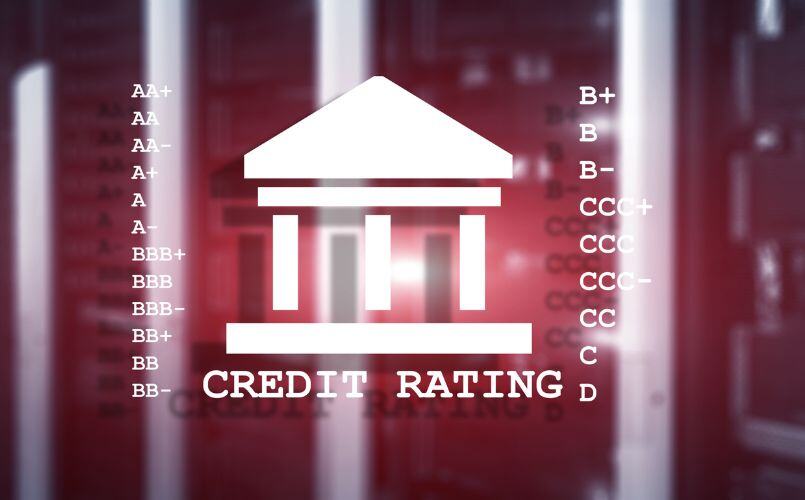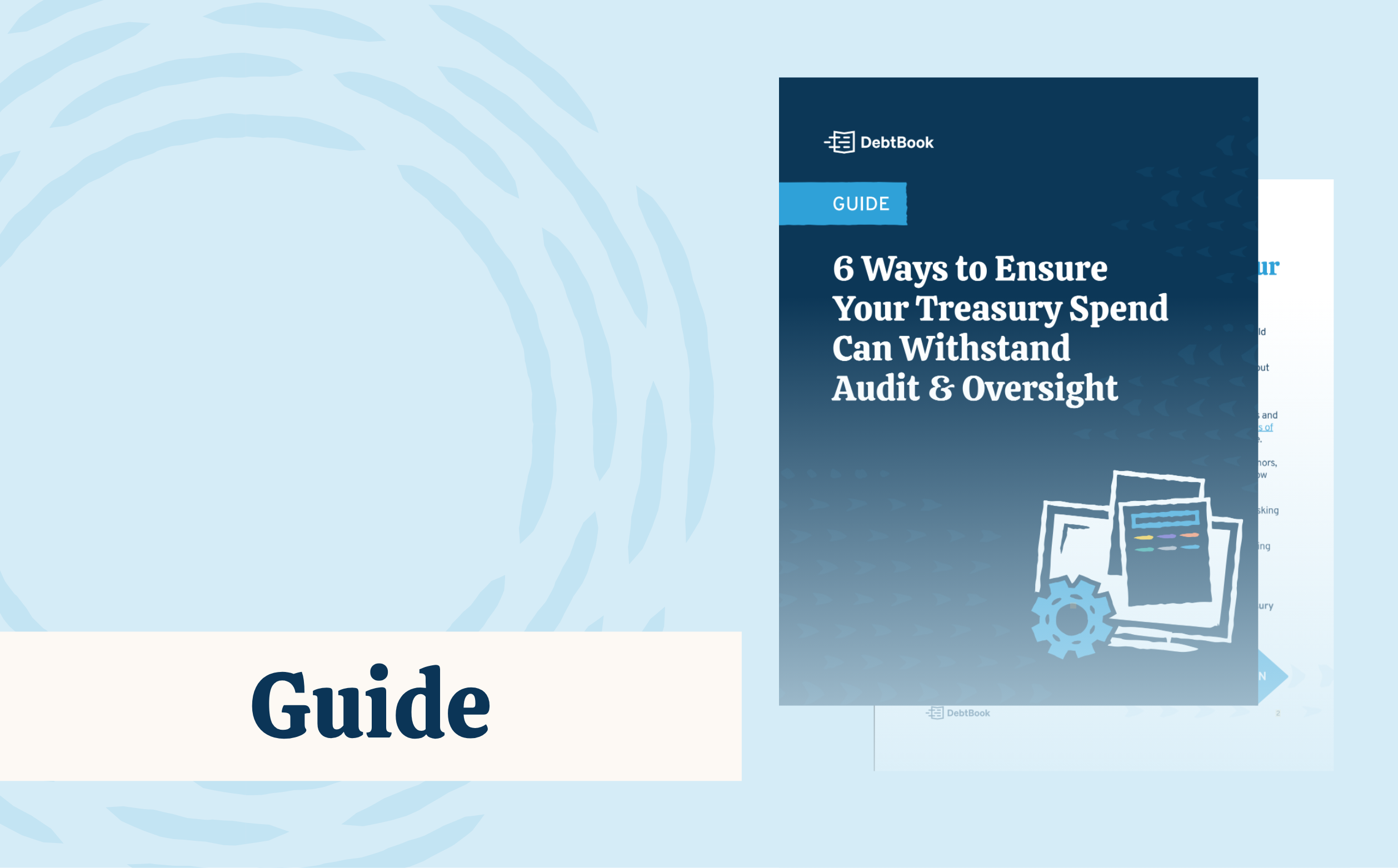There are over 65,000 state and local governments, school districts, and other issuing authorities that have accessed the municipal bond market. The amount of outstanding municipal bonds is approximately $4 trillion.
The breadth and depth of the municipal market makes deciding what bonds to buy based on the credit quality of this diverse group of borrowers both challenging and interesting.
Credit quality can succinctly be described as figuring out the ‘ability and willingness’ of these borrowers to repay their debts. Individual bond buyers and institutional investors must think about this basic tenet when making investment decisions. It's important for them to conduct a comprehensive analysis of the borrower's credit strengths and weaknesses.
The Role of Credit Rating Agencies
To address the investor’s buying decision, credit rating agencies were created. A credit rating agency’s role in the capital market is to provide an independent risk analysis. Their opinions and role are as an impartial arbiter of credit, providing information to help investors make buying decisions that include credit, pricing, market, and many other factors.
For municipalities, the credit rating agencies analyze the government’s financial condition and overall liabilities including bonds and pensions, governance, and the underlying economy’s ability to repay.
Currently, there are four different credit rating agencies:
Each agency looks at an issuer from a slightly different perspective to ascertain an issuer’s ability to repay the debt.
Credit ratings have a direct impact on either:
- the value of outstanding bonds, and
- the yield, and directly the cost, of bond issues to be sold into the capital markets in the future.
A chart of Moody’s ratings and a definition of each rating is included in the appendix below.
Rating Agencies and Credit Scores
Large institutions (e.g., large bond fund or investment bank), tend to purchase bonds in large blocks (i.e., large dollar amounts), so they might have their own research team responsible for analyzing an issuer’s probability of repayment. These research teams also have slightly different perspectives on issuer’s repayment capabilities but tend to use the credit rating agencies as a base for their research.
Separately managed accounts (SMA) are targeted towards wealthy individuals and have evolved to be among the largest buying segment of the municipal bond market with a portfolio of assets that are professionally managed.
Two important credit factors in evaluating municipalities are the economy and the financial condition of the borrower. For example, reviewing the issuer’s economic base, the analysis considers the following:
- Economic growth as measured by value of property and population trends
- Revenue raising capacity, willingness when needed and, limits or tax caps
- Assessing the balance between annual revenues and spending and the ability to control expenditure growth
- Trend in fiscal year-end surplus and available reserves
- Largest taxpayer and employers and any concentration risk
- Income levels of residents
Rating Criteria for General Obligation and Revenue Bonds
The following summarizes rating agency considerations for the two basic categories of municipal bonds: general obligation (GO) and revenue bonds.
General Obligation Bond Ratings
Since a GO bond is backed by the full faith and credit of the issuer’s taxing ability, the rating agencies analyze the issuer’s ability to generate such revenue under four broad categories: socioeconomic base, financial analysis, debt analysis, and administrative factors.
Socioeconomic Base
Factors considered in evaluating the socioeconomic base are income levels, rate of income growth, employment mix analysis, and population growth. Cities with higher income levels and a strong, diverse economic base demonstrate a greater capacity to pay the long-term debt. A high capacity to pay in the present does not necessarily demonstrate the ability to pay in the future.
Financial Analysis
In financial analysis, rating agencies conduct historical budget and audit report analyses. The agency looks at the issuer’s ability to meet its present needs as well as its future needs. For GO bond issues, the rating agency concentrates on the main operating funds that are basically tax-supported.
Debt Analysis
Factors that are addressed by the rating agencies in a debt analysis include debt issuance, debt history, debt payout schedules, and the misuse of debt financing. Other factors considered include the issuer’s ability to operate within a budget that meets the ongoing capital needs and debt obligations. Additionally, past voter-approved bond authorization trends can indicate the issuer’s willingness to pay the debt.
Administrative Factors
Assessment of the administrative body and management of the issuer by the rating agencies includes such factors as management controls, long-range planning, and budgeting techniques. Also, included in the evaluation are tax rates, levies, collection and property valuation, and assessment trends.
Revenue Bond Ratings
Revenue bonds are paid solely from the revenues of the political entity or project. The common types of revenue bonds issued today include utility, transportation, educational, economic development, special tax, stadium, and recreational facilities bonds. The four key areas the rating agencies examine when rating the bonds are legal, economic, administrative, and financial.
Legal
The bond resolution is the most important document the rating agencies consider in revenue bond financing. It defines the bondholder’s security, the issuer’s responsibilities, and the bondholder’s recourse in the event of a default. Other important provisions include the order of the flow of funds and their lien position, the parity bond test, and the rate covenant. The rate covenant states that the issuer agrees to charge a sufficient rate that will maintain the minimum level of revenues needed to pay the operating expenses, debt service requirements, and reasonable margins.
Economic
The primary reason for an economic analysis is to evaluate both the demand for the services rendered by the revenue-supported, tax-exempt, bond-financed project and the ability of the ultimate users to pay for those services. Basic economic trends are examined, as well as, trends related to the specific revenues pledged to the project.
|
Example In a proposed utility financing, trends in utility connections, annual energy peak sales, peak and average daily demand, and demand per capita are examined. The rating agencies must determine whether the general economic activity in the area is stable or declining. If economic activity is decreasing, demand for the service provided by the revenue-supported project will most likely decrease. Also important to study is the issuer’s susceptibility to competition from the private sector; particularly, facilities such as parking garages, toll roads, and utilities. |
Administrative
Quality and depth of management are important in the evaluation of administrative factors. Rating agencies examine management’s historical records such as policies and operating plans. The agencies also study the budget preparation methods, budget variance monitoring system, receivables management, the rate policies, and the ability to make demand projections in terms of the size and structure of the service.
Financial
In the financial analysis, the debt service coverage ratio is considered the critical element. Rating agencies prefer coverage of more than 1x the debt service. This indicates that rates are at sufficient levels to repay bonds with reasonable margins. Liquidity in the service’s equity position, and the service’s future financing needs and projected operations, are also examined by the agencies.
Changes to credit evaluations are a constant to reflect current or emerging risks.
|
Example Let’s consider the focus on long-term issues such as ‘climate change’ and how they can potentially impact a municipality. Rating agency ‘assessments’ are covered in rating agency write-ups separately assessing so-called ESG or environmental, social, and governance risks. Rating agency ESG assessments are not ratings but are included in rating reports to address sustainability principles that ‘may’ be of interest to market participants. Whether it be hurricanes, flood risks, sea-level rise, or forest fires in California, these concerns are being covered where applicable. Increased property and casualty insurance premiums and their impact on future growth and property values are issues that are manifested in evolving credit analyses. |
A recent development in risk management involves pre-funding through the issuance of catastrophe bonds. Event risks like wildfires and deep freezes have prompted the creation of securitizations to cover the costs associated with these catastrophes. As a result, issuers of debt are increasingly expected to disclose these risks in their official statements. Credit analysis is dynamic, so there's a need to incorporate emerging issues as they become relevant and material to market participants.
Recent Trends and Developments in Municipal Bond Ratings
Below are some current events in the credit world:
- Investors and credit rating agencies are weighing how much effect the collapse of the Francis Scott Key bridge in Baltimore's inner harbor will have on the local economy and logistics on the East Coast, though early indications suggest no drastic credit impact.1
- A Washington state hospital district's ratings fell further into junk territory and were placed on review for further downgrade, reflecting what Moody's Ratings called "severe and immediate liquidity challenges."2
- Fitch Ratings' new U.S. local government rating criteria are expected to lead to changes to about 550 ratings in the next six months.3
Fitch adopted the new criteria — which will affect cities, counties, school districts, and special districts — after working on the revision since the fall. The criteria will also be used to assess tax-supported hospital districts, water and/or sewer utilities, public transit systems, and other enterprises receiving tax support. “The change is expected to impact about 35% of 1,560 securities from 900 issuers,” said Michael Rinaldi, Fitch Head of U.S. Local Government Ratings. Fitch will soon publish an "under criteria observation watch list" of securities that may be affected. - Drinking water, wastewater, and stormwater (water sector) utilities are experiencing more costly operational and financial impacts from the increased frequency and severity of climate change-related disasters. As a result, the financial and insurance industries are increasing their focus on climate change risk in their assessments of water sector utilities. Thus, it is important that water sector utilities properly identify, manage, and disclose climate change risk and resiliency efforts to ensure that they can continue to provide essential water services.
These activities can also influence the utilities’ credit ratings, and investor relations, as well as the ability to attract investors and access insurance coverage at an affordable price. If a water sector utility does not provide sufficient information about its climate change threats, vulnerabilities, and adaptation strategies, financial institutions may base decisions on incomplete or publicly available information, which may not provide the most accurate picture of the utility's climate change risk.4
Conclusion
Credit ratings are important in informing potential and current bondholders ‘what is the credit worthiness’ of an issuer. The credit worthiness of an issuer defines the value of the issuer’s outstanding bonds (i.e., yield on the bonds) along with market conditions. There are many factors that go into the credit rating of an issuer. A credit rating only analyzes the rating of an issuer based on today’s facts. If those facts change in the future, the issuer’s rating will change.
Given the evolving nature of credit analysis, it's important for market participants to stay informed about new trends and developments. This includes assessing the impact of emerging risks, like climate change, and understanding how credit rating agencies incorporate these into their evaluations. As the market landscape shifts, credit ratings will continue to adapt, providing investors with the insights needed to navigate the complexities of the municipal bond market.
Appendix – Definition of Moody’s Investors Service Ratings5
Investment Grade
Aaa: Bonds which are rated Aaa are judged to be of the best quality. They carry the smallest degree of investment risk and are generally referred to as “gilt edge”. Interest payments are protected by a large or by an exceptionally stable margin and the principal is secure. While the various protective elements are likely to change, such changes as can be visualized are most unlikely to impair the fundamentally strong position of such issues.
Aa: Bonds which are rated Aa are judged to be of high quality by all standards. Together with the Aaa group they comprise what are generally known as high grade bonds. They are rated lower than the best bonds because margins of protection may not be as large as in Aaa securities or fluctuation of protective elements may be of greater amplitude or there may be other elements present which make the long-term risks appear somewhat larger than Aaa securities.
A: Bonds which are rated A possess many favorable investment attributes and are to be considered as upper medium grade obligations. Factors giving security to principal and interest are considered adequate, but elements may be present, which suggest a susceptibility to impairment sometime in the future.
Baa: Bonds which are rated Baa are considered as medium grade obligation, i.e. they are neither highly protected nor poorly secured. Interest payments and principal security appear adequate for the present but certain protective elements may be lacking or may be characteristically unreliable over any great length of time. Such bonds lack outstanding investment characteristics and in fact have speculative characteristics as well.
Non Investment Grade
Ba: Bonds which are rated Ba are judged to have speculative elements: their future cannot be considered as well assured. Often the protection of interest and principal payments may be very moderate and thereby not well safeguarded during both good and bad times in the future. Uncertainty position characterizes bonds in this class.
B: Bonds which are rated B generally lack characteristics of the desirable investment. Assurance of interest and principal payments or of maintenance of other items of the contract over any period of time may be small.
Caa: Bonds which are rated Caa are of poor standing. Such issues may be in default or there may be present elements of danger with respect to principal or interest.
Ca: Bonds which are rated Ca represent obligations which are speculative in a high degree. Such issues are often in default or have other shortcomings.
C: Bonds which are rated C are the lowest rated class of bonds and issues so rated can be regarded as having extremely poor prospects of ever attaining any real investment standings.
Note: Moody’s applies numerical modifiers, 1, 2 and 3 in each generic rating classification from Aa through B in its corporate bond rating system. Modifier 1 indicates that the security ranks in the higher end of its generic rating category: the modifier 2 indicates a mid-range ranking; and the modifier 3 indicates that the issue ranks in the lower end of its generic rating category.
Sources:
5 Portions from Moody’s Ratings
Related Municipal Finance Reading
- What the Refunding is Going On? Exploring Tax-Exempt Bond Refunding
- Bond Insurance: Making a Marketable Credit Better
- How Climate Risks are Shaping Municipal Financing
Disclaimer: DebtBook does not provide professional services or advice. DebtBook has prepared these materials for general informational and educational purposes, which means we have not tailored the information to your specific circumstances. Please consult your professional advisors before taking action based on any information in these materials. Any use of this information is solely at your own risk.













